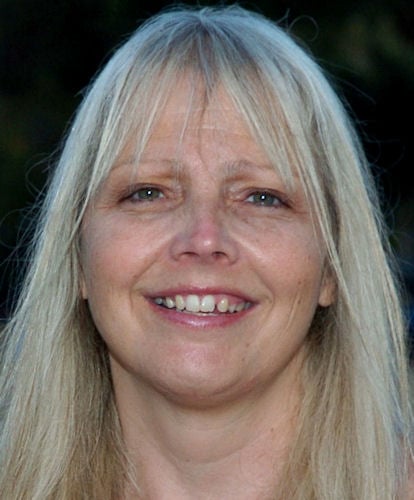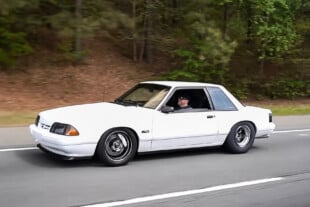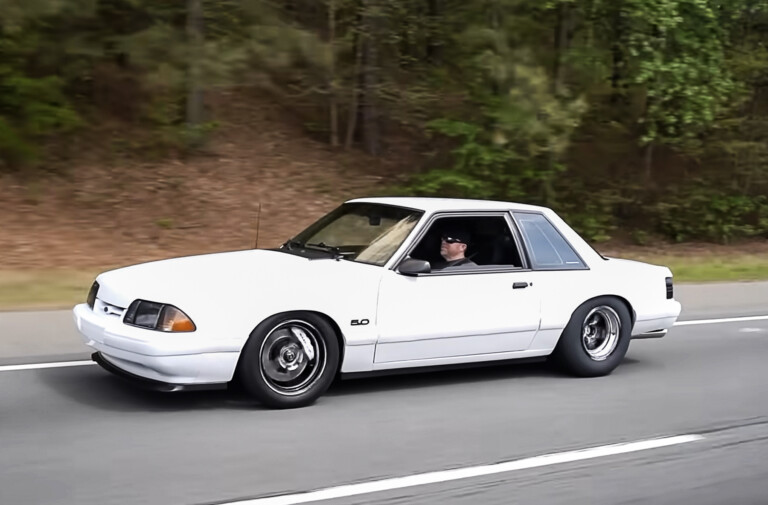Top Fuel racer T.J. Zizzo was an overachieving underdog already popular with NHRA crowds before the recent Amalie Oil Gatornationals.
But he became more so as the weekend went along. After all, who doesn’t like seeing a racer who hadn’t competed since the U.S. Nationals last September come out and grab the provisional No. 1 qualifying spot and go to the semifinals on race day – and barely miss out on a trip to his first final round because of a lousy $4 part?
The euphoria was there for Zizzo and his Rust-Oleum Dragster crew, certainly. But the entire experience at Gainesville Raceway mainly reinforced the Lincolnshire, Ill., driver’s conviction that the NHRA’s new track-prep practice is improving drag racing.
“When we choose to go to an event, it costs us $100,000. That’s no exaggeration,” Zizzo said. “Here’s the problem with the sport: It’s hard-pressed to be worth $100,000 of exposure for the weekend. So I’m going into boardrooms and asking for a minimum of $100,000. And that’s a challenge.
“The past three events we have gone to, it has been wonderful [from a performance standpoint]. We’re going home with all our parts and pieces, because there is less track prep. About a year ago, I was buying a crankshaft every two passes, because everyone was running [3.]60s and we were trying to keep up with that. The harder you run, the more parts you go through, right?” he said. “So NHRA has done less track prep, and I told [NHRA executives], ‘Just keep doing what you’re doing.’”
One of them, perhaps jokingly, said, “Well, I’m the bad guy in all of this.” Zizzo told him, “Well, somebody’s got to be the bad guy. You’re not here to make friends. You’re here to run a business.”
The sport is not there yet. I still have to go knock on the doors of boardrooms. That’s where I have to go. That’s how I’m still going to find marketing partners. The sport is still minute in the big world of sports, although it’s one of the best products.
“The less track prep, the less money I personal am spending. I’m sure if I’m spending less money, the rest of the camps are, too,” he said. “And that allows us to either (A) go to more races or (B) ask for less money because … corporations have so many different ways they can spend their money. We’ve got to knock that back.
“So the NHRA is administering less track prep. Now they just need to get it more organized to where it’s more consistent. There’s going to be a learning curve for that, but as long as PRO, which are the racers, and the NHRA work together, I think this is going to be good for the sport,” Zizzo said. “So there could be more people racing and spending less money.
“I was really proud that NHRA and PRO worked together before that event. That was the best thing I’ve seen. And I hope that continues, just making things a little bit better for everybody, a little bit easier,” he said. “NHRA is listening, and you’re never going to please everybody. But if you can please more than 50-percent, you’re doing OK.”
Because they had minimal parts damage and fared incredibly well, more so than many of their better-heeled competitors, the thought occurred to Zizzo and his father that they could afford to enter the April 5-7 Denso Spark Plugs Four-Wide Nationals at Las Vegas. But, showing the same kind of restraint and discipline as Blake Alexander and team owner Bob Vandergriff did after eye-opening early-season success as a part-time team last year, the Zizzos stuck to their plan. They’ll participate for sure at the Route 66 Nationals, at Joliet, Ill., in late May/June and at the U.S. Nationals at Indianapolis again in September.
“We could go to Vegas, but that’s not smart. In years past, yes. But now, no. We’re still building inventory,” he said. “We have more equipment than most single-car teams, which is unbelievable – more parts, more pieces to go to the racetrack with. We’ll think about going to another race, but chances are we’ll just go to Indianapolis and Joliet.”
As much as he wishes potential marketing partners would be impressed with his on-track performance and approach him to talk business right on the spot, Zizzo is realistic.
“The sport is not there yet. I still have to go knock on the doors of boardrooms. That’s where I have to go. That’s how I’m still going to find marketing partners. The sport is still minute in the big world of sports, although it’s one of the best products,” he said. “That’s not happening yet. I have a feeling in the future it will if we continue to [perform well]. But we’ve got to do it more frequently. I know we’ve done it two out of three races now, but once we continue to do that, it’ll be a lot easier to find marketing partners.
“I believe [NHRA President] Glen Cromwell has his ears open. He’s listening. I’ve heard that from multiple people, other marketing partners that sponsor other teams. We have a great product. Now it just needs to be sold. I’m hoping in years to come, with people working together to make this sport better, [funding will come a bit easier].”
Zizzo said that at the Gatornationals, “We really had the car to beat. I was on my game. The team stepped up. We just broke a $4 pushrod adjuster. That’s why it dropped a hole. I left on [winner] Richie Crampton [.068 to .075], and I had a better 60-foot time, even though we put a hole out that early. It was crazy. We were marching right through there, but it is what it is. We’re not at our peak quite yet. We’ll get there. I ask myself, ‘Are we lucky or do we just work really hard?’ I think it’s a little bit of both.”
And that explains why one of his crew members was teary-eyed that Friday night at Gainesville when they looked poised to earn their first top-qualifying position.
The less track prep, the less money I personal am spending. I’m sure if I’m spending less money, the rest of the camps are, too. And that allows us to either (A) go to more races or (B) ask for less money because . . . corporations have so many different ways they can spend their money.
“I watched the expression of our entire team when I went through the finish line and when the saw the scoreboard light up. That’s what gets me excited,” Zizzo said. “I saw that they jumped for joy like they just won the event, and one of the guys even had tears in his eyes. So that’s what it’s about, honestly. Our guys work really hard on our race car. I realize I haven’t raced since the U.S. Nationals, I understand that. Everyone understands that. But we’re constantly working on it. You know, some part-time teams, they park their car for an extended period of time and then they kind of get it out of the woodwork and run their car to just run it. We don’t do that. We really race hard, and I choose to spend time away from my family, my wife, my daughter. I choose to do that so I’d better make it worthwhile. The most disappointing thing I get to do after first round of losing is call my wife. And then she says, ‘Hey, why in the world do you do all this and lose first round?’ So when we come here, we want to win, and that’s our goal.”
Accomplishing what he accomplished at Gainesville without the benefit of files and files of data, he said, is “impressive – and it’s actually more impressive than I think the average fan realizes.”
Every appearance at the racetrack yields a moment of enlightenment. This time the lesson was about that pushrod adjuster. Someone clued him in that it’s a part that needs replacing every so many months. “We didn’t know that. And there’ll be another part that will break that somebody will say, ‘Oh, that. Didn’t you know you had to replace that every 15 months?’ And he hadn’t put new tires on his dragster since the 2017 fall Las Vegas race.
“We’re learning about weight transfer on these cars. We’ve been doing this a long time but you’re always learning something,” Zizzo said. He had “put the car on a diet,” he said, and figured when his normally overweight car lost 101 pounds, “we thought our center of gravity was going to be exactly the way it was. Well, apparently it wasn’t, because of the way in which it hiked the tires [on his opening run]. So it’s also how much fuel you burn from the time that car starts to your burnout to staging the car. So I know I was a little quicker [in his second qualifying attempt]. These are things we’ve got to work on as a team. We’ve got to do a little bit better job.”
From crew chief Mike Kern on down to the last man, Zizzo’s crew is all-volunteer.
“Not one of us is a full-time team member, not one of us — all volunteer, because we love it,” Zizzo said. Some of these team members have been with us for 27 years. Tony Smith, who does our clutches, he’s been with me since we were young kids. The first time I ever really stood on the gas of a Top Alcohol Dragster in 1991, he was there shortly thereafter. He’s also the guy that we went up and down the road in a dually crew cab forever. Traveled the country with him. He was always my voice of reason, and he still is today. Twenty-seven later, I’ve probably paid him about 50 cents. So it’s pretty amazing. There’s stories like that beyond just Tony Smith. Most of our guys, our core guys, have been with us for at least 10 years, and that’s something special. So that’s another reason we could come out and be successful – because all the guys have done the same job for an extended period of time.”
Each Rust-Oleum Dragster crew member has a steady 9-to-5 job. So when an unfavorable weather outlook cast doubt on whether they’d would be able to make their Sunday afternoon flights home to such destinations as California and Spokane, Wash., every one of them said, “I’m here for you. Let’s do it.” Zizzo’s response was “Really?” (“It cost me a lot of money to get them home,” Zizzo said, conceding that it certainly was worth it.)
In October he declared that he wanted to race more in 2019, and helping him do that is a gentleman from Dixon, Calif., near Sacramento: Bob Button, who owns Button Transportation. That association has allowed Zizzo to reward his loyal crew.
Here’s the problem with the sport: It’s hard-pressed to be worth $100,000 of exposure for the weekend. So I’m going into boardrooms and asking for a minimum of $100,000. And that’s a challenge.
Zizzo said he told them, “We have spent the past three or four years building inventory, buying good parts, doing the right thing for the race car, but unfortunately all of us get neglected. That’s just the way it works, right? All of us want to come here and be competitive.” Now, he said, “Finally we could give back.”
He also told Button, “The money you’re giving us I appreciate that. You’re not giving it to us but you’re sponsoring our race car, [and] we’re giving it back to our team. That’s what I’m doing with it.”
Starting with the Gatornationals, Zizzo said, his crew members “are going to make 100 percent of the winnings on our race car. It was sometimes a 50/50 split; sometimes it was a 25/75 split, depending on how many parts we needed.”
Although Zizzo hadn’t raced since the U.S. Nationals last September (and hadn’t been to Gainesville, Fla., since 2013), he jumped to the top of the provisional leaderboard Friday night at the Gatornationals. And he wasn’t used to all the attention.
When your last name begins with a “z” and three of its five letters are “z,” you’re never surprised to be last. But Zizzo was first – and he was surprised when Jessica Hatcher, the NHRA’s senior director of public relations and communications, summoned him to the press room for his No. 1 qualifier interview. She asked him to come to the media center and he was concerned, asking if he did something wrong.
Clutch specialist Tony Smith had advised him, “I think you’re supposed to go to the tower.” Puzzled, Zizzo asked, “What for?!” He said, “We were working on our race car. I’m as hands-on as I can be. I was told a long time ago I need to spend time with the race car.”
Zizzo’s program is taking big strides, and he is adjusting to new demands on his time and new protocols. He doesn’t mind, though. He knows he’s headed in the right direction.
























